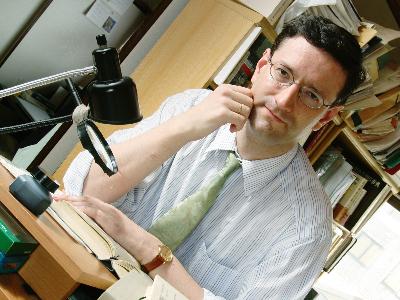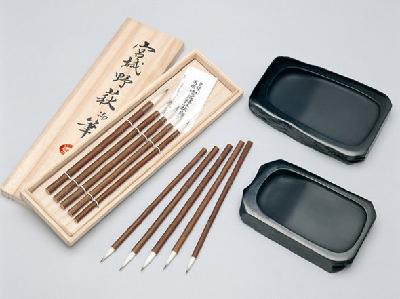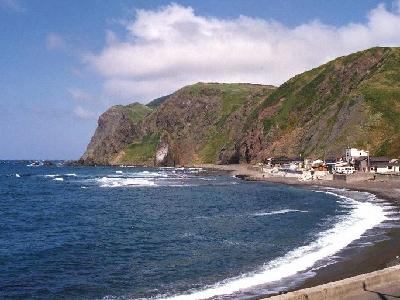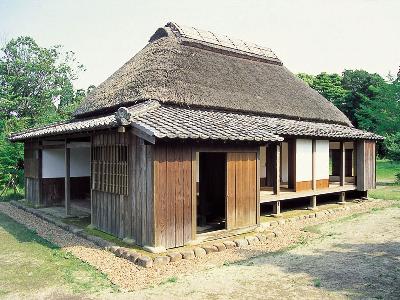|
Dr. Christoph Schmitz is a scholar of the work of Dr. Shizuka Shirakawa, Japan's leading authority on the origin of Kanji, or Chinese characters. Dr. Schmitz also researches the history of philosophical thought as well as Japanese thought. A native of Cologne, Germany, he currently resides in Tokyo, Japan.
His interest in Kanji was aroused while he was studying the history of Japanese thought based on the understanding of Japanese and general history, philosophy and the history of philosophy at universities both in Germany and Japan. The absence of convincing explanations of the relationship between Kanji forms and their meaning in the world of Western higher education made him lose his trust in established Kanji education. In 1997, reading an interview with Dr. Shirakawa about his work, he started his research. After teaching history of philosophy and Kanji for adult education classes in Germany, hoping to introduce Dr. Shirakawa's work and meritorious achievements to the world, in 2001, he met Dr. Shirakawa for the first time. In the following year, he became a research student at University of Tokyo Faculty of Law.
In December 2003, he started translating 'Jouyoujikai' (Basic Kanji Dictionary), a primer on Kanji written by Dr. Shirakawa with the consent of the author. To tackle the manifold difficulties of this yet unseen project took him almost three years. His aim is to base Kanji learning on natural understanding.
On Transcription
Few Japanologists seem to have read the proclamation of the Japanese prime minister from 9 December 1954, in which capitalization of nouns in alphabetical transcription of Japanese is sanctioned. After all, it still is nothing less than the official Japanese transliteration system. Accordingly, capitalization is applied in this translation to clearly mark nouns for learners who often do not know which word is a noun, and which is not. Thus, to counter the weakness of modern English spelling which does not clearly mark nouns, I come back to the traditional English capital spelling of nouns as usual some hundred years ago.
On Terminology
There are a lot of problematic or false notions widely used in the field that can mislead learning once they hoaxed the mind of the unwary, which is why I use terms that learners will find more convincing, like the following.
Tortoise Plastron, not Tortoise ‘Shell’
Those thousands of tortoises used for divination seem to have died in vain. Few term coining scholars ever took the pain to verify which one of the two shells of these tortoises was used; a rough translation with ‘shell’ or ‘carapace’ misses the specific meaning of the Kanji 甲 and gives an unclear view of the matter. The flat belly plate was used in what amounts to a percentage of more than 99 % of cases, the carapace, however, which is the hooked back shell only in very rare exceptions: It is too hard to be carved in. The character 甲 shows the flat ‘plastron’ with the vertical and horizontal notched natural ‘lines’ of the belly or breast shell.
Revisiting in 2016
This introduction with its casual explanations intending to help a first easygoing acquaintance with Shirakawa's character explanations is now complemented with your comprehensive dictionary "The Keys To The Chinese Characters"!
Giving the full contents as only a dictionary can, it renews and supersedes a part of the terminology given here.
With its technical terms and methodical approach enriched with many citations from and references to the classics, a meticulous commentary and copious indexes you will have a powerful instrument to master your study and enjoy deepening your understanding.
His interest in Kanji was aroused while he was studying the history of Japanese thought based on the understanding of Japanese and general history, philosophy and the history of philosophy at universities both in Germany and Japan. The absence of convincing explanations of the relationship between Kanji forms and their meaning in the world of Western higher education made him lose his trust in established Kanji education. In 1997, reading an interview with Dr. Shirakawa about his work, he started his research. After teaching history of philosophy and Kanji for adult education classes in Germany, hoping to introduce Dr. Shirakawa's work and meritorious achievements to the world, in 2001, he met Dr. Shirakawa for the first time. In the following year, he became a research student at University of Tokyo Faculty of Law.
In December 2003, he started translating 'Jouyoujikai' (Basic Kanji Dictionary), a primer on Kanji written by Dr. Shirakawa with the consent of the author. To tackle the manifold difficulties of this yet unseen project took him almost three years. His aim is to base Kanji learning on natural understanding.
On Transcription
Few Japanologists seem to have read the proclamation of the Japanese prime minister from 9 December 1954, in which capitalization of nouns in alphabetical transcription of Japanese is sanctioned. After all, it still is nothing less than the official Japanese transliteration system. Accordingly, capitalization is applied in this translation to clearly mark nouns for learners who often do not know which word is a noun, and which is not. Thus, to counter the weakness of modern English spelling which does not clearly mark nouns, I come back to the traditional English capital spelling of nouns as usual some hundred years ago.
On Terminology
There are a lot of problematic or false notions widely used in the field that can mislead learning once they hoaxed the mind of the unwary, which is why I use terms that learners will find more convincing, like the following.
Tortoise Plastron, not Tortoise ‘Shell’
Those thousands of tortoises used for divination seem to have died in vain. Few term coining scholars ever took the pain to verify which one of the two shells of these tortoises was used; a rough translation with ‘shell’ or ‘carapace’ misses the specific meaning of the Kanji 甲 and gives an unclear view of the matter. The flat belly plate was used in what amounts to a percentage of more than 99 % of cases, the carapace, however, which is the hooked back shell only in very rare exceptions: It is too hard to be carved in. The character 甲 shows the flat ‘plastron’ with the vertical and horizontal notched natural ‘lines’ of the belly or breast shell.
Revisiting in 2016
This introduction with its casual explanations intending to help a first easygoing acquaintance with Shirakawa's character explanations is now complemented with your comprehensive dictionary "The Keys To The Chinese Characters"!
Giving the full contents as only a dictionary can, it renews and supersedes a part of the terminology given here.
With its technical terms and methodical approach enriched with many citations from and references to the classics, a meticulous commentary and copious indexes you will have a powerful instrument to master your study and enjoy deepening your understanding.
| [→より詳しい記事を見たい方はこちら] | |
| [+ADDRESS] | 
|




















